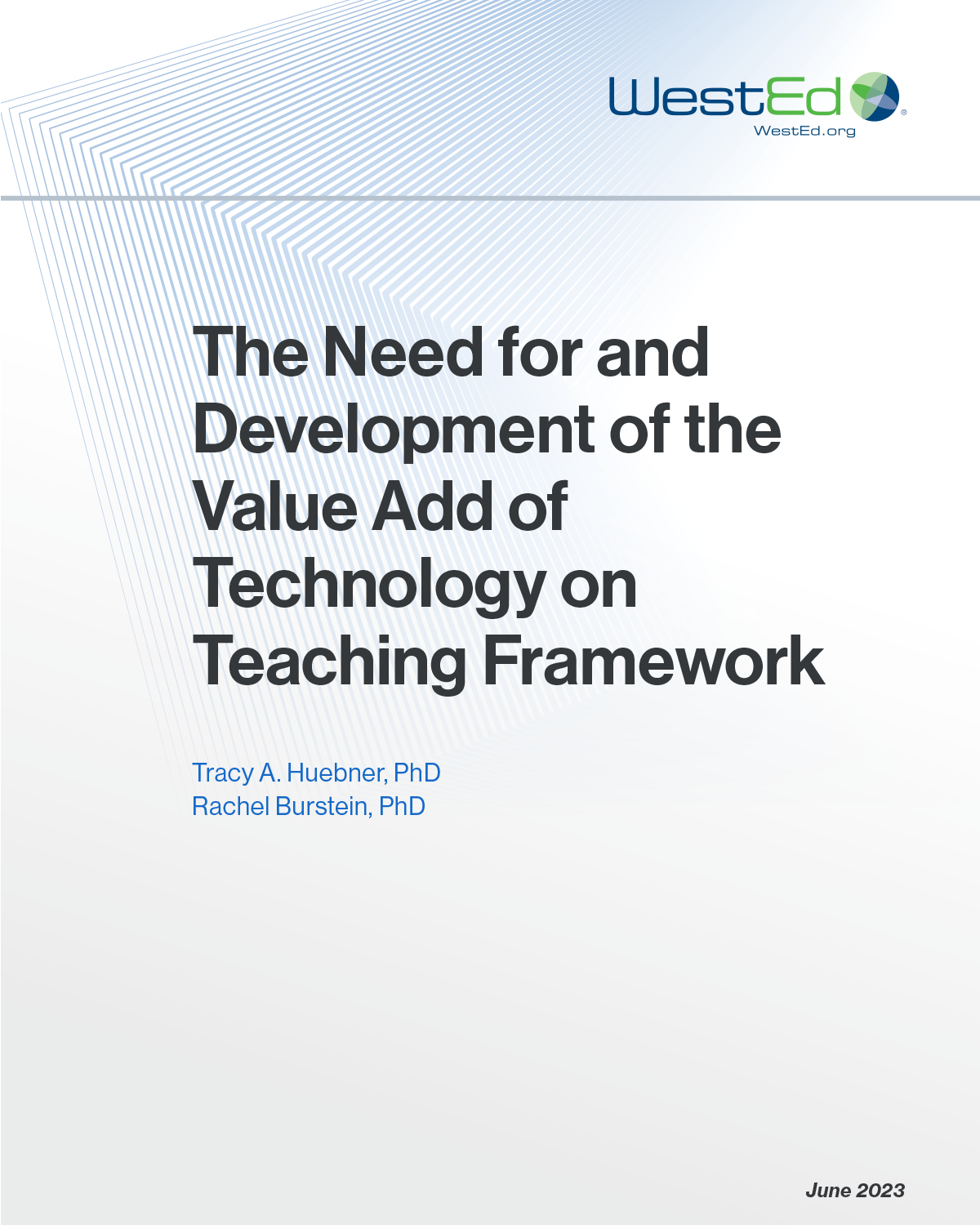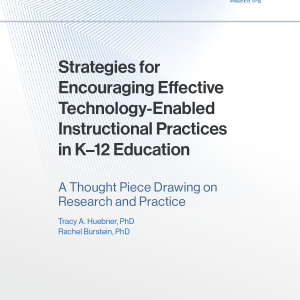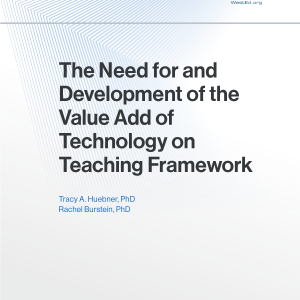There’s a Gap in the Education Framework Ecosystem. These Partners Came Together to Help Fill It
Posted on

By Tracy Huebner, PhD and Rachel Burstein, PhD
Dr. Huebner is the Director of Advancement for Teaching and Learning at WestEd. Dr. Burstein is an independent education researcher and writer. They collaborated on the paper documenting the development of the VATT Framework and the thought piece that forms the basis for this post.
There is no shortage of teaching frameworks, on the one hand, and technology integration frameworks, on the other hand. Indeed, when asked, weary teachers will often tick off a list of frameworks that they engage with. A school or district might require teachers to use a particular teaching framework. A teacher might attend a PD workshop or PLC that introduces them to another framework. A system might pilot a technology integration framework to aid teachers in implementing a new technological tool.
Given that overwhelming framework landscape, why would anyone want to create yet another framework?
The answer lies in what is missing in the current landscape ecosystem. As we explore in a recent thought piece, research shows that there are certain areas where technology is uniquely positioned to benefit student learning when used in particular ways in particular contexts. Researchers label these instructional benefits in different ways, but they can be grouped roughly into five categories:
- personalization, differentiation, and customization to address learner needs
- curation, availability, accommodation, and accessibility of vetted educational materials and learning environments
- student engagement, interest, and motivation
- communication, collaboration, and relationship-building
- learning analytics
Still, there’s no single framework that aims to address how technology can be leveraged effectively in achieving instructional practices that capitalize on these benefits in order to advance student learning. In other words, there’s no single framework that tackles the concept of technology-enabled instruction—the space where technology is most adaptable for impact in instruction. (We explore this concept in a previous post.)
|
|
Coming Together to Fill a Need
It was this realization that propelled a diverse set of interest group holders to come together around a common goal: investigate and create materials that could bridge the gap between instructional practice frameworks and technology integration frameworks. Google for Education led the charge, resourcing the work and bringing together independent, expert partners who offered a range of perspectives and represented diverse areas of expertise.
 We explore this process and list the various partners involved in a recent report documenting the project that ultimately culminated in the release of “The Value Add of Technology on Teaching Framework,” a new framework developed by the nonprofit that aims to fill the existing gap in the field.
We explore this process and list the various partners involved in a recent report documenting the project that ultimately culminated in the release of “The Value Add of Technology on Teaching Framework,” a new framework developed by the nonprofit that aims to fill the existing gap in the field.
Jennie Magiera, Global Head of Education Impact at Google explains this collaborative approach to investigating and creating materials to support technology-enabled instruction. “At Google, we’re an edtech company, we’re not a research education institution. We try to approach problems with humility,” Magiera reflects. “We said, ‘We need the experts in the room to be driving this work. Our best role is to support the work, to catalyze the conversation, to hold space for the work.’ That brought us to [our two main partners on this work] WestEd and Leading Educators.”
How the Partners Worked Together
As shown below, WestEd led the research and investigation phase of the work and worked with a Technical Working Group and nearly two dozen reviewers to surface considerations, guardrails, and ideas for any eventual framework. (A complete list of TWG members and reviewers appears in the Acknowledgments section of the paper documenting this project.) Leading Educators examined this research to lead the framework design and development phase of the project.
Phase I: Research and Investigation
- Key Partners
- WestEd as lead research organization
- Technical Working Group (TWG) members
- Reviewers
- Google for Education
- Key Activities
- Develop a landscape scan of existing instructional and technology integration frameworks for internal use
- Identify key themes and benefits of technology-enabled teaching and learning from research
- Solicit written feedback in reaction to key themes and benefits of technology-enabled teaching and learning
- Establish goals and criteria for success for technology-enabled teaching and learning frameworks
- Make recommendations to the framework design and development team
- Develop a thought piece, informed by relevant literature, on technology-enabled teaching and learning
Phase II: Framework Design and Development
- Key Partners
- Leading Educators as lead development organization
- Google for Education
- Key Activities
- Review synthesized feedback from WestEd, the TWG, and reviewers
- Conduct additional desktop research to better understand the current use cases for existing frameworks and to inform clear design principles for framework development
- Crosswalk the thought piece and landscape review with ideas for framework
- Develop and refine the framework language and format, taking into account received feedback from other interest holders
- Develop a reflection tool aligned with the framework
What’s Next?
Leading Educators and Google for Education are working with a range of interest holders to share and pilot the framework in different contexts. Regardless of what comes next, they expect to leverage similar processes as the research and development phases of this project. These processes include relying on partners who are respected in their fields, prioritizing learning from research, engaging in deep and responsive listening to practitioners, and looking for approaches that empower and support teachers themselves.
If you’d like to be involved in Leading Educators’ work to refine and operationalize the VATT, please contact Albert Kim at akim@leadingeducators.org.
Additional Resources
Huebner, T. A., & Burstein, R. (2023). The need for and development of the “Value Add of Technology on Teaching Framework. WestEd.
Huebner, T. A., & Burstein, R. (2023). Strategies for encouraging effective technology-enabled instructional practices in K–12 education: A thought piece drawing on research and practice. WestEd.
Leading Educators. (2023). Value Add of Technology on Teaching (VATT). https://www.valueedtech.org



